Jemaja Island, Riau Islands Province, Indonesia
5.0 (5 reviews) Spent More than 3 hours Ranking #2 in Anambas Islands Islands
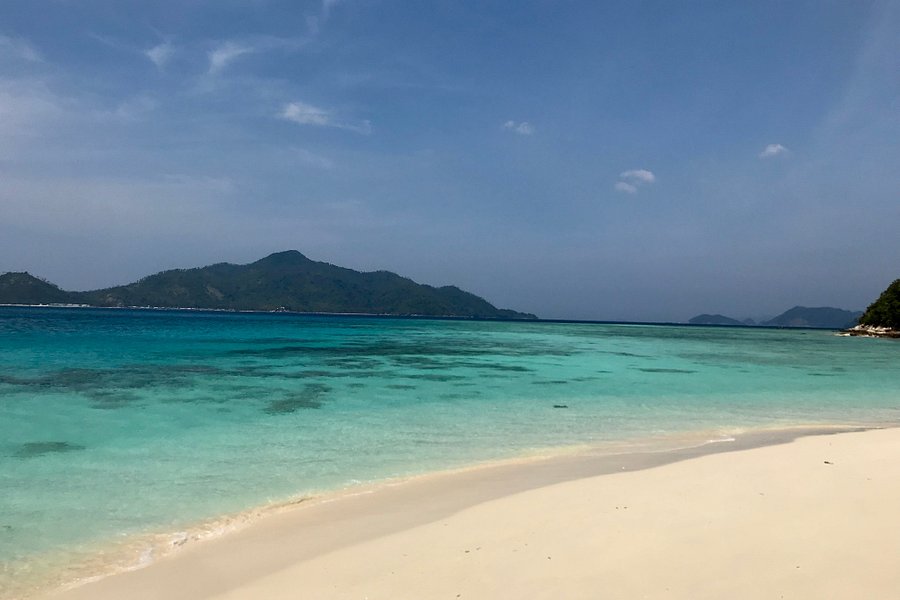
Jemaja, Anambas islands: smiles, corals, views and adventures
A friend and I went to Jemaja for 4 days, coming from Singapore. It's really a hidden gem that has beautiful nature (uninhabited islands, blue waters, corals, beach, jungle, etc) but without the mass tourism! Locals are warm, especially kids are always happy to say hello and take pictures. It also means the infrastructure is not there yet, so you can't expect any luxurious stay or very settled activities and food options. For example, we did an island hoping tour on a tiny fisherman boat, which was part of the fun too :) Locals are not yet very familiar with Western tourism standards so you sometimes need to be patient and relaxed since "10 am at place A" generally ends up "11am at place B". If you're staying around the Pantai Padang Melang area, know that it is a bit remote from Letung and car rides are quite expensive on Jemaja (~20 usd per trip per car) so I would recommend you to rent a motorbike to move around, it's much cheaper and more convenient. The roads are generally quite empty so it's not too stressful as well (roads can be bumpy but it's manageable). There is no 3G near Pantai Padang Melang and the neighborhood wifi is VERY wonky too (took me ~20 min to send a whatsapp message). Because we were there during Hari Raya (Eid), there weren’t many places open to eat around so we ended up eating in Letung most of the time (only a 10 - 15min ride away). Overall a very good trip. Our main highlight was the island hoping tour and driving around the island in scooter. The islands around Jemaja are like uninhabited paradise with jungle and crystal blue waters. Corals are also in great shape.

Address
, Indonesia.
Current local date and time now
Tuesday, May 14, 2024, 0:14
User Ratings
5.0 based on (5 reviews)
Reviews
-
5alice g 5:00 PM Aug 18, 2019
Hidden gem
A friend and I went to Jemaja for 4 days, coming from Singapore. It's really a hidden gem that has beautiful nature (uninhabited islands, blue waters, corals, beach, jungle, etc) but without the mass tourism! Locals are warm, especially kids are always happy to say hello and take pictures. It also means the infrastructure is not there yet, so you can't expect any luxurious stay or very settled activities and food options. For example, we did an island hoping tour on a tiny fisherman boat, which was part of the fun too :) Locals are not yet very familiar with Western tourism standards so you sometimes need to be patient and relaxed since "10 am at place A" generally ends up "11am at place B". If you're staying around the Pantai Padang Melang area, know that it is a bit remote from Letung and car rides are quite expensive on Jemaja (~20 usd per trip per car) so I would recommend you to rent a motorbike to move around, it's much cheaper and more convenient. The roads are generally quite empty so it's not too stressful as well (roads can be bumpy but it's manageable). There is no 3G near Pantai Padang Melang and the neighborhood wifi is VERY wonky too (took me ~20 min to send a whatsapp message). Because we were there during Hari Raya (Eid), there weren’t many places open to eat around so we ended up eating in Letung most of the time (only a 10 - 15min ride away). Overall a very good trip. Our main highlight was the island hoping tour and driving around the island in scooter. The islands around Jemaja are like uninhabited paradise with jungle and crystal blue waters. Corals are also in great shape.
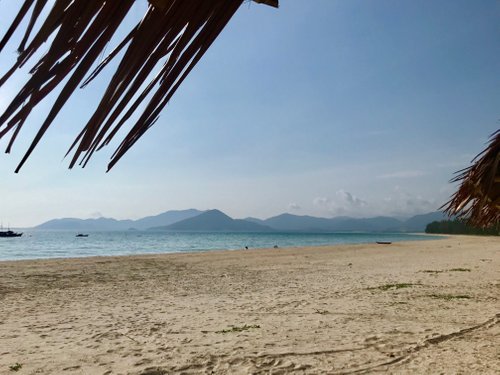

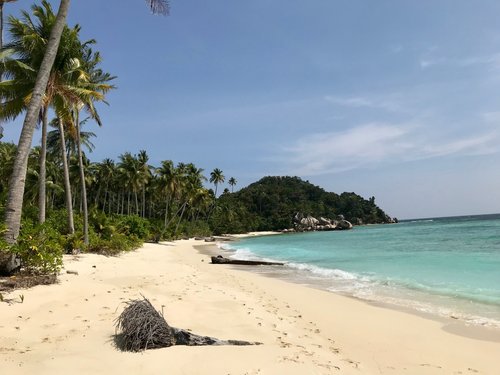
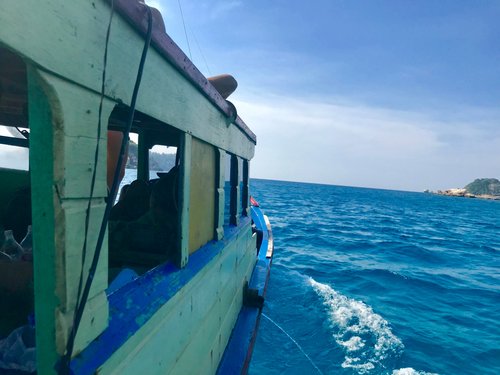
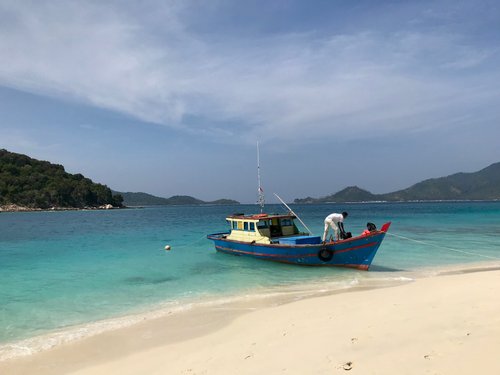

-
5Natalie D 5:00 PM Nov 18, 2019
Jemaja, Anambas islands: smiles, corals, views and adventures
We have been to Jemaja for a couple of weeks in July - August 2019. There was a tight schedule, just to say that we have been camping on surrounding (mostly uninhabited) islands for more than 8 days. We were snorkelling, swimming with currents between islands and in the open sea, kayaking, hiking, driving here and there by scooter, trying local food and fruits, visiting other villages, and just enjoying the islands. Corals are huge and beautiful, coral life is amazing, turtles, huge gangs of fish, shells, pristine crystal clear water - yes, breathtaking views - yes, jungle is lush, flowers are all around, many animals: monkeys, lizards, crocks (these guys we, unfortunately, did not see, and happily did not encounter in the wild), and many other things which are impossible to mention in one review. We did not spot sharks and dolphins, but they are there, especially if you are lucky to reach the Southern islands, which we did not make. People are extremely friendly, but we do not speak Indonesian, while very few of them speak English. So, most of these activities would be absolutely impossible without assistance and organization by Ade Hussin (with his kind permission - WhatsApp: +62 812 7656 0301) - an enthusiast, an expert in local culture and nature, an amazing guide, and a very good travel companion. He is from Jakarta, but spends a lot of his time on Anambas, and there are many thankful references to him in the web. For us he was organizing all the local trips. This includes supplies, hiring boats (he knows many people on the island), preparing camps, cooking delicious food, showing amazing snorkelling spots, advising us where to go/swim and waiting in agreed places, leave alone guidance, translation and assistance when needed. We spent many enchanting evenings together under the stars, and we are very grateful to him for everything he did for us. About logistics: We flew to Singapore, then ferry to Batam, then a flight to Jemaja. We kept room in Letong (Miranti hotel) for all the days to store things and to stay in-between the trips. The hotel is OK, it has own diesel generator that helps when the power on the island is down, which happens very often. Some of the nights the air condition was a blessing (30+ C...). Letong village is beautiful and authentic, but not that quiet, and you cannot swim there right from the shore. But there were no good accommodation available in Padang Melang those days, while in Miranti we had no problem with food and restaurants (which may become an issue if you do not speak the language), water, cold shower, etc., which normally takes a lot of your time in such remote places. We hired a scooter, which was breaking, but, thanks to Ade, the reparations were made fast (or they were just replacing the scooter). When it comes to the trips, we were moving around Jemaja and Telaga island groups by a fishing boat (traditional pong pong), with two of us, Ade, and the captain (Dan, who is a great person but does not speak English). Most of the time Dan's brother Rizal was also joining us to help with boat in some tricky anchorages; he was sleeping on the boat with Dan. We were staying in a tent (provided by Ade), which we never closed as it was very warm. Ade was sleeping somewhere on the beach under the stars. Original plan was also to visit Siantan/Terempa, but considering all the options there was not enough time. What is really pity, is that we did not make it to Kiabu (Airabu): the Jemaja's chief navy said NO, and have shown us a video of the waves to the South of Jemaja those days. Indeed, they were a bit too big for few hours in a pong pong. But since it blew from South, we could swim around the Northernmost islands and still stayed away from the strong wind and breaking waves. It was amazing. Some highlights: We did long distance swims with currents, snorkelling in the open sea. We love to stay on the outer part of the reefs, where the water is fresher, where you feel the waves and see much more underwater. The challenge with such swims is to find somebody who can drop you where the current starts, and then pick you up at an agreed place, or can go search for you if you did not come back at reasonable time. We were lucky that we met Ade, as he was doing such swims himself and had idea about currents and waves that we could encounter. As a result, we were swimming and snorkelling many kilometres, between and around isolated islands, or in the open sea, normally with a current helping us, and did not need to spend time going back and forth along the same long routes. Once around Telaga our old kayak broke and capsized in the open sea just before dusk, luckily we were in about 1 km from the reef, had fins and goggles with us, and had a rough idea where we can cross the (large...) reef to come back. It was scary until we could confirm that we are moving faster than the current, and we relaxed only after we reached the reef, tied the broken kayak to the corals and crossed the reef. It was getting dark, the tide was low, and there were many sea urchins and sharp corals. But it was fun :) Some advice: Equipment: carry everything with you, do not rely on local shops. The power socket is the British standard, unlike the rest of Indonesia. Take plenty of sun cream. We never used mosquito repellent (partly because a very careful choice of the camp places), but this may be an issue too. Take a small boiler to make hot water if you want a bit for the shower in the hotel, although in Miranti hotel they can heat water for you. Water is to be boiled for drinking, but bottles are sold everywhere. Take FLASHLIGHTS! Carry cash (Rupiah, or at least USD, which may be possible to change): when we were there, there was no ATM for western cards on Jemaja. As of August 2019, there was essentially no internet. Public hot spots were useless, at least for us when we needed to send email. But Ade found a guy with a satellite phone... Prices are generally low. But some things are more expensive (than say, in Batam) just because it is an island. For price overview look elsewhere, things are getting changed. If you are into long distance swimming: tides are tricky, and it is one of those places with roughly one tide per day. At low tides a reef may become a barrier, so be prepare to scratch through carefully. This may be challenging if it is getting darker. Hence - watch the waves and memorize the map! We had an app with nautical charts - this helped in trip planning. A waterproof flashlight may help when coming back in the evening. We did not use reef shoes (as we used fins), but sandals are, of course, needed if you are camping on a beach and shoes are generally needed when hiking. I did not feel any dress code pressure. I was OK in long shorts or even in a short dress with long sleeves. Bikini may be OK on the beach, though be prepared for excited kids and that nobody of locals will wear bikini. Personally, I chose breezy clothes protecting from the sun, so most issues were solved this way. While swimming we both wore swimming shorts and rash guards. Food (if not specially made for you) is simple, but normally fresh and tasty. Sauces can be VERY spicy. Local fruits are abundant and very tasty, but not easily available in the restaurants: they cook for locals, who are not that much into all this... Try to buy somewhere on the road. This also applies to coconuts. And, of course, all the alcohol you need to bring with you. Coffee was delicious everywhere, but as a real tea lover I felt that choice of teas was somewhat limited, to two varieties of black tea :). Take a phrase book (or at least an app), if you do not speak the language. And ask those who try to understand you, they normally want to help. And smile! :)